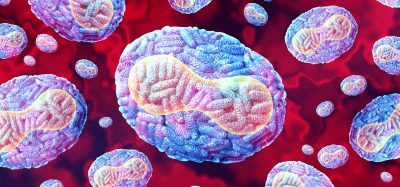M6A modification is crucial for HIV-1 survival
Posted: 12 April 2024 | Drug Target Review | No comments yet
The discovery of three m6A modifications and their exact locations could lead to the development of drugs that inhibit viral RNA and protein production.


Researchers from The Ohio State University have confirmed, after much scientific debate, that the N6-methyladenosine (m6A) modification is crucial for the HIV-1 virus’s ability to survive after infecting host cells. Despite drug development associated with this work being years away, targeting the site-specific m6A modifications could lead to the design of a novel treatment for HIV infection, the senior study author Dr Sanggu Kim said.
The m6A modification is a common RNA editing process in all life forms that involves changing gene expression and protein production. Although the functional effect frequently represents a cellular solution, in some cases, it results in disease.
Dr Kim, investigator in the Center for Retrovirus Research at The Ohio State University, explained: “These sites are very important for producing virus proteins and for producing viral genomic RNA…An intriguing question is, why does HIV maintain multiple m6As? Our conclusion is that m6A is so important that HIV wants to have multiples to have redundancy. If it loses one or two, it’s OK. If it loses all three, it’s a problem.”
Significance of RNA modification
HIV-1 is the most common type of HIV, infecting millions of people globally. It is a good example of why research on RNA modification has gained much more attention in recent years, Dr Kim stated.
“Especially because HIV is an RNA virus with a very compact RNA genome, it has to encode all of the survival information within its RNA genome – it’s using not only nucleotide sequences, but all of the chemical and structural features of RNA as codes to execute its infection of host cells,” Dr Kim explained. “We know every aspect of RNA function is very important, but we don’t really know how exactly these chemical and structural modifications of RNAs regulate virus infection.”
Prior studies had produced conflicting conclusions about whether the m6A modification helped or harmed the virus, primarily because its location was unknown and efforts to understand its effect were based on knocking out host cell genes rather than mutating the virus genome itself. Using nanopore direct RNA sequencing enabled the team to observe a full length of the HIV-1’s RNA genome, which is difficult because RNA is a notoriously unstable and complex molecule.
Having discovered the three m6A modifications and their exact locations, out of the total 242 potential sites that can harbour an m6A, the researchers analysed individual RNA molecules with distinct ensembles of m6A modifications, including those with multiple m6As and those with just one of the three m6As.
They discovered that any ensemble of m6A modifications produced similar functional changes, regardless of the number or the position of m6As. However, the removal of all three caused devastating effects to viruses. “Until now we didn’t know which exact nucleotides are modified and how they function, and how it’s important for viruses or how it’s important for cells. Our paper addresses the keys to these important questions,” Dr Kim said.
“Why would HIV need all three modifications if they’re functioning in the same way?” he continued. “Our study is the first to show that HIV-1 utilises this unique, important mechanism at the RNA level for its evolutionary benefit.”
Almost every existing HIV drug stops virus replication, but no medications inhibit viral RNA and protein production. Dr Kim believes that this study suggests the potential to develop therapies that could target these later steps.
This study is published in Nature Microbiology.
Related topics
Antiretroviral Therapies, Protein, RNAs, Virology
Related conditions
HIV-1
Related organisations
The Ohio State University
Related people
Dr Sanggu Kim (The Ohio State University)








